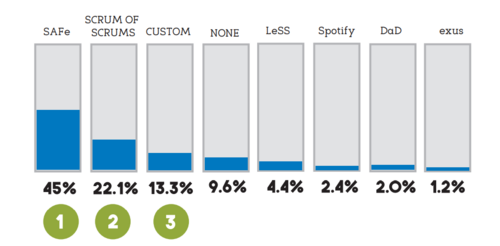(Re)Introducing Project Management in a SAFe world
Traditionally Software development has utilized Project Managers and Project Management. But With the introduction of the Scaled Agile Framework (SAFe) into development organizations from its release in 2011, the most popular Enterprise scale Agile model in the world effectively advocated removing Project Managers from development organizations. The early SAFe versions advocacy of a new organization with new roles took traditional project manager responsibilities and moved them (partially) into the new SAFe's roles such as Product Owners, Scrum Masters and RTE’s. This led many organizations to "throw out the baby with the bathwater" by ignoring the value of those project, program and portfolio management practices that were not incorporated or clearly articulated in these early versions of SAFe. During the period 2011-2017 Project management as a separate formal practice within many software development Organizations literally had no place in those organizations that tried to fully deploy SAFe as written. This is important because as of 2017 the SAFe methodology was used by 45% [1] of those firms using an Agile methodology at scale. Many of these firms have had to contend with a number of issues that this caused up until the acceptance of Project Management through its "introduction" in the form of an Agile Project Management Office (APMO) in the 2017 release of SAFe version 4,5. This implicitly accepted the role PMO's play in strategy formation, Project and Program execution as well as owning and disseminating best practices (in this case represented in the SAFe model by the "Lean Centre of Excellence"). This development represents and acceptance from SAFe that their model should incorporate these project project, program and portfolio practices that had been dropped in previous versions. In this article we look at the issues that have arisen in many firms during their SAFe implementations and explore whether the new APMO solves these issues or not. The article is intended for practitioners who are working in or with organizations that have deployed early versions of SAFe as part of the support for establishing an APMO along the lines now advocated by SAFe. Note: Due to the relatively new and evolving nature of SAFe there is limited empirical data around specific “Implementation issues in Large Scale Agile transformations”. As a consequence this article is more reliant more on Anecdotes, Personal Experience and other literature in this space.
Scaled Agile Framework (SAFe)
What is SAFe?
SAFe is the most popular Scaling Agile methodology According to the extensive "Scaling Agile Report 2017" by C-Prime .[1]
According to ScaledAgileFramework.com[2]:
Quoting Dean Leffingwell (the creator and chief methodologist of SAFe) [3]
Cite error:
<ref> tags exist, but no <references/> tag was found
